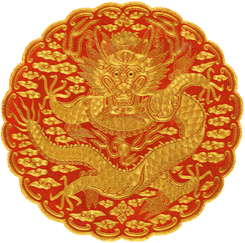Political factions in Joseon Dynasty
| Political factions in Joseon Dynasty | |
| Hangul | 붕당 |
|---|---|
| Hanja | 朋黨 |
| Revised Romanization | Bung-dang |
| McCune–Reischauer | Pung-tang |
The Bungdang (Hangul: 붕당, Hanja: 朋黨) refers to political factionalism that was characteristic of Middle and Late Joseon Dynasty. Throughout the dynasty, various regional and ideological factions struggled for dominance in the political system. Village Seowon, which combined the functions of Confucian shrines with educational institutions, often reflected the factional alignment of the local elite.
During the earlier period of Joseon in 15th and 16th century, tension between the Hungu faction in the Capital and the Yeongnam-based Sarim faction dominated national politics, which culminated in a series of four bloody purges between 1498 and 1545, in which Sarim faction was persecuted by the Hungu faction. Following these setbacks, the Sarim faction withdrew to rural provinces where they maintained power base and ideological continuity through Seowon and Hyang'yak (a system of social contract that gave local autonomy to villages). Eventually, Hungu faction declined without ideological successor to replace it while Sarim faction emerged as the dominant faction during the reign of Seonjo.
In the 16th century, a nationwide split occurred within the Sarim faction between the Western faction (Seo-in) and Eastern faction (Dong-in), composed mainly of younger generation. Political divisions intensified even further as the Eastern faction in turn split between the hard-line Northern faction (Buk-in) and the moderate Southern faction (Nam-in)[1] and the Western factions split between the Old Learning (No-ron) and the Young Learning (So-ron). Northern faction further split into Greater Northern and Smaller Northern factions. These names for faction often come from relative location of its leader's house.
These factional splits grew out of allegiance to different philosophical schools and regional differences. For instance, Eastern faction was largely Youngnam-based, and its subfaction Southerners were mainly followers of Yi Hwang while Northerners coalesced around the school of Jo Shik. Gyeonggi and Chungcheong-based Western faction were largely followers of Yi I, of which followers of Seong Hon split to form So-ron faction and while So Siyeol's followers became No-ron faction. These divisions were often further driven by questions concerning royal succession or appropriate royal conduct. For example, the split between the Northerners and Southerners was driven by debate over the proper successor to Seonjo, who had no legitimate son. The Northerners came to support the Gwanghaegun; accordingly, they flourished under his reign (1608–1623) but were swept from power by the Westerners after the succession of Injo.
Under the reigns of Yeongjo and Jeongjo in the 18th century, the kings pursued a strict politcy of equality, favoring no faction over another.[2] However, in Jeongjo's reign, strife re-emerged as the ruling No-ron faction split further between the Byeokpa and Sipa, two groups which cut across the earlier factions and differed in their attitudes concerning Yeongjo's murder of his son, who was also Jeongjo's father. In the 19th century, Joseon politics shifted as in-law families rather than scholarly factions came to dominate the throne. For most of the 19th century, the Jangdong branch of the Andong Kim clan was in control of the government; however, there was a brief interlude in which control shifted to the Pungyang Cho clan.
During the reign of Gojong, real power initially belonged to his father the Heungseon Daewongun, who on one hand sought to reform corrupt state institutions but on the other hand pursued a policy of isolationism, opposing the opening of the country to Western and Japanese influences. From the 1870s onwards, Queen Min (known posthumously as Empress Myeongseong) became more dominant and pursued a policy of cautious modernisation and opening up. Her dominance was opposed by reactionaries and progressives alike. The Enlightenment Party (also known as Progressives) sought to modernise the country along Western and Japanese lines. These factional struggles led to the Imo Incident and Gapsin Coup, as well as increased foreign interference in Korean affairs.
Factions of Sarim
Philosophical Lineage
- Yi Saek --> Jeong Mong-ju --> Gil Jae --> Kim Suk-ja --> Kim Jong-jik (Youngnam Sarim) --> Kim Gueng-pil --> Jo Gwang-jo (Giho Sarim)
- Youngnam School: Yi Hwang --> Seoung Hon, Yu Seong-ryong, Kim Seong-il
- Giho School: Yi I -> Kim Jan-seng --> --> Song Siyeol
- Jo Shik --> Kim Hyo-won, Jeong In-hong, Gwak Jaeu
- Seo Gyeong-deok --> Heo Gyun, Hwang Jin-i
Division of Sarim
Sarim -->
- Eastern (Youngnam School) -->
- Southern (Yi Hwang)
- Northern (Jo Shik) -->
- Greater Northern
- Lesser Northern
- Western (Giho School) -->
- No-ron (Yi I)
- So-ron (Seong Hon)
Political leaders
- Easterners: Kim Hyo-won (his house was on eastern side)
- Northern: Yi Bal (his house was below northern Bukak Mountain), Yi San-hae, Jeong In-hong
- Greater Northern: Yi San-hae, Hong Yeo-sun, Heo Gyun
- Lesser Northern: Nam Yi-gong, Kim Seon-guk
- Southern: Woo Seong-jeon (his house was below South Mountain), Yu Seong-ryong -->
- Heo Mok, Yoon Hyu -->
- Northern: Yi Bal (his house was below northern Bukak Mountain), Yi San-hae, Jeong In-hong
- Westerners: Shim Eui-gyeum (his house was on western side)
- No-ron: Song Siyeol
- So-ron: Han Tae-dong, Yoon Jeung
Portrayal in Media
- In the Korean Drama Yi San in 2007, The No-ron Faction are portrayed as the King Jeongjo's chief enemies and the antagonists in the series. They made his father, Crown Prince Sado, die while fallen from grace and tried to shame or kill his son, Yi San (known later as King Jeongjo), throughout his life and reign while the So-ron and Nam-in Factions are mentioned in the dialogue. The series also portrays the split within the No-ron faction during his reign and implied that it was a contributing factor to their political defeat.
